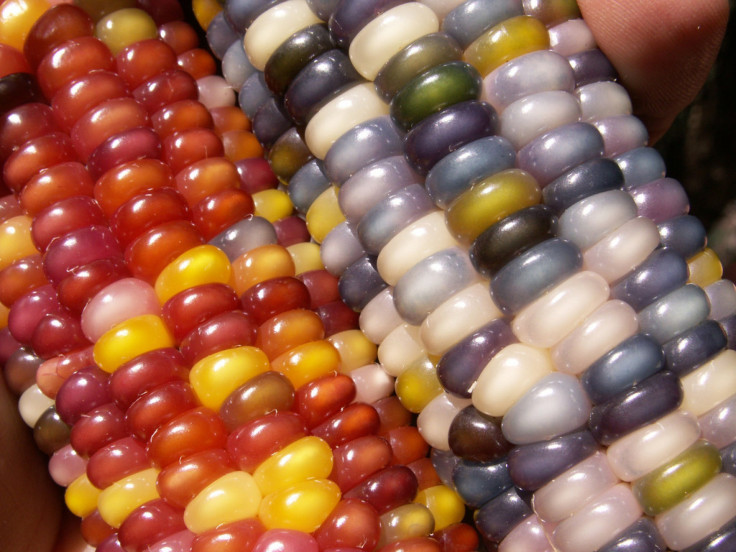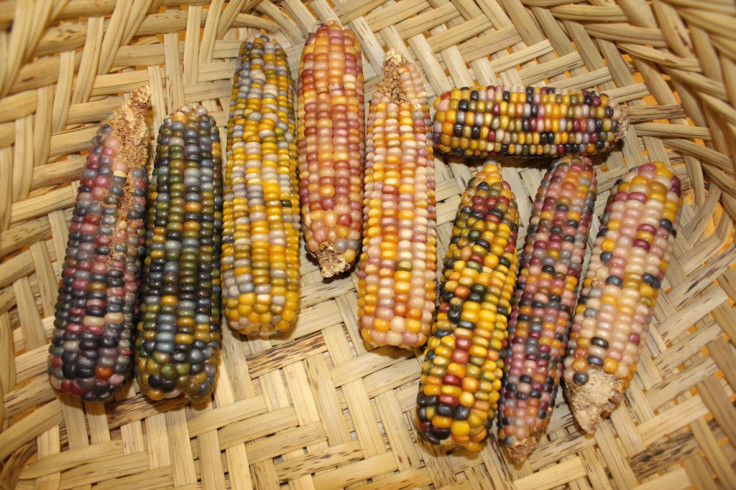Kaleidoscope Corn: Brilliant Glass Gem Corn Captures Farmers Across The Nation

One Oklahoma farmer can be credited with bringing an added splash of color to gardens and dinner plates across the country.
Multicolored Glass Gem corn originated with part-Cherokee farmer Charles Barnes after the Oklahoma man noticed that some cobs often include colorful ears of corn. Barnes gathered seeds from the ears with the most vivid hues, breeding them together for years to produce a choice collection of seeds.

Barnes passed the seeds to his friend Greg Schoen and also shared with Schoen the process of breeding the Glass Gem corn. In 2010, Schoen made the decision to store several of the seeds for "safekeeping" while he was in the process of moving. He decided to store the seeds with Seeds Trust, a small seed company in Arizona, ensuring Barnes' spectacular collection of Glass Gem corn seeds wouldn't face the risk of getting lost when he relocated. Curious about the seeds with the peculiar name of Glass Gems, Bill McDorman, owner of Seeds Trust at the time, decided to plant a few of the seeds in his own garden. He was amazed at what the seeds produced.
"I was blown away. No one had ever seen corn like this before,” McDorman said in a statement on the website of Native Seeds/SEARCH, a nonprofit organization he founded to protect and preserve the agricultural heritage of Native Americans. McDorman is now the executive director of the organization. Native Seeds/SEARCH sells the Glass Gem seeds through its site. But due to the high demand for the seeds, the rare product often sells out. How many seeds will be available for purchase varies from season to season. The corn -- which is flint corn -- can be used for making popcorn and flour. But unlike sweet corn, it isn't usually eaten straight from the cob.
How many years Barnes actually took to cultivate his collection of seeds remains unknown. But his hard work ultimately led to a lasting agricultural legacy that continues to enthuse farmers and foodies across the country.
© Copyright IBTimes 2024. All rights reserved.
Join the Discussion





















